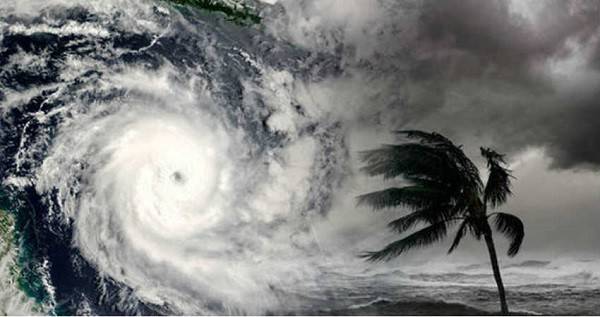
Cyclone Gulab has turned into a deep depression over north Andhra Pradesh and is expected to continue moving west-northwestwards, weakening further into a depression over the next six hours, according to the India Meteorological Department (IMD).
At least three people were killed in Odisha and Andhra Pradesh as Cyclone Gulab made landfall on Sunday evening in the two states' coastal regions. According to officials, one person was carried away in Odisha's Ganjam district, while two fishermen from Andhra Pradesh's Srikakulam district were killed and another went missing.
"At 02:30pm IST on September 27th, the Cyclonic Storm 'Gulab' over north Andhra Pradesh and adjoining south Odisha deteriorated into a Deep Depression over north Andhra Pradesh." It is expected to continue moving west-northwestwards and degrade more into a depression during the following 6 hours,” IMD said at 4:15 a.m.
According to an IMD official, Cyclone Gulab made landfall near Kalingapatnam in the Andhra Pradesh district of Srikakulam at the villages of Miduguda and Tokali. During landfall, the cyclone's wind speed was around 90 kilometres per hour in Kalingapatanam and 30 kilometres per hour in Odisha's Gopalpur, he added.
Odisha's special relief commissioner, PK Jena, stated on Sunday that more than 39,000 people, including 600 pregnant women, the disabled, and the elderly, were evacuated to safety prior to the cyclone's landfall, adding that the state has noticed no visible or notable damage. Jena stated that several preventive steps were taken in order to avert any adverse incidence. “Our officials are on high alert and visiting locations to monitor preparedness,” he added.
Jena stated that the seven southern districts of Ganjam, Gajapati, Kandhamal, Rayagada, Koraput, Malkangiri, and Nabarangpur have been placed on high alert due to the risk of landslides.
According to an official at the revenue and disaster management said that the cyclone, the second in four months after Yaas caused havoc in Odisha in May, had a lesser impact.
Moreover, the East Coast Railway has cancelled 34 pairs of trains, postponed 13 trains, and diverted at least 17 trains as a result of Cyclone Gulab. “In light of the forecast of severe rain and cyclonic wind, ECoR has taken the essential precautions,” it added.
According to a South Central Railway statement, eight trains on the Vijayawada-Howrah route were diverted through Kharagpur, Jharsuguda, Bilaspur, and Balharshah. Two additional trains that were supposed to start their journey on Sunday have been postponed until Monday.
“We may also expect extensive rain throughout central India in the coming days” Sunitha Devi, IMD's cyclones in-charge, stated.
Rainfall alert in many parts
Heavy rains and cyclones are caused by atmospheric low pressure and depressions on the Indian subcontinent. Cyclone Gulab is expected to have windspeed of 75 to 85 km/hr, with gusts of 95 kmph, before weakening and travelling across central India as a low-pressure system, according to the Met department.
On Tuesday, most places will get moderate rain, with isolated areas of Gujarat, central Maharashtra, Konkan, and Goa seeing exceptionally heavy rain of more than 20 cm. Heavy to very heavy rain is also expected in scattered places across Saurashtra, Kutch, and Marathwada.
On September 28, there may be a cyclonic circulation over the east-central Bay of Bengal with a travel pattern similar to Cyclone Gulab. According to IMD experts, there is no chance of another cyclone developing.
According to Mahesh Palawat, vice president of climate change and meteorology at private forecaster Skymet Weather, the southwest monsoon is unlikely to leave in the next week. “Patchy rain will continue to fall over northwest India, including the Delhi NCR”. The monsoon may end with normal rainfall of around 99% of LPA,” Palawat said. The term LPA refers to the long-period average of rainfall between 1961 and 2010.
The IMD's extended range model guidance predicts heavy rain over the country until October 7 and patchy rain until October 14. The monsoon typically departs from northwest India on September 16.
















